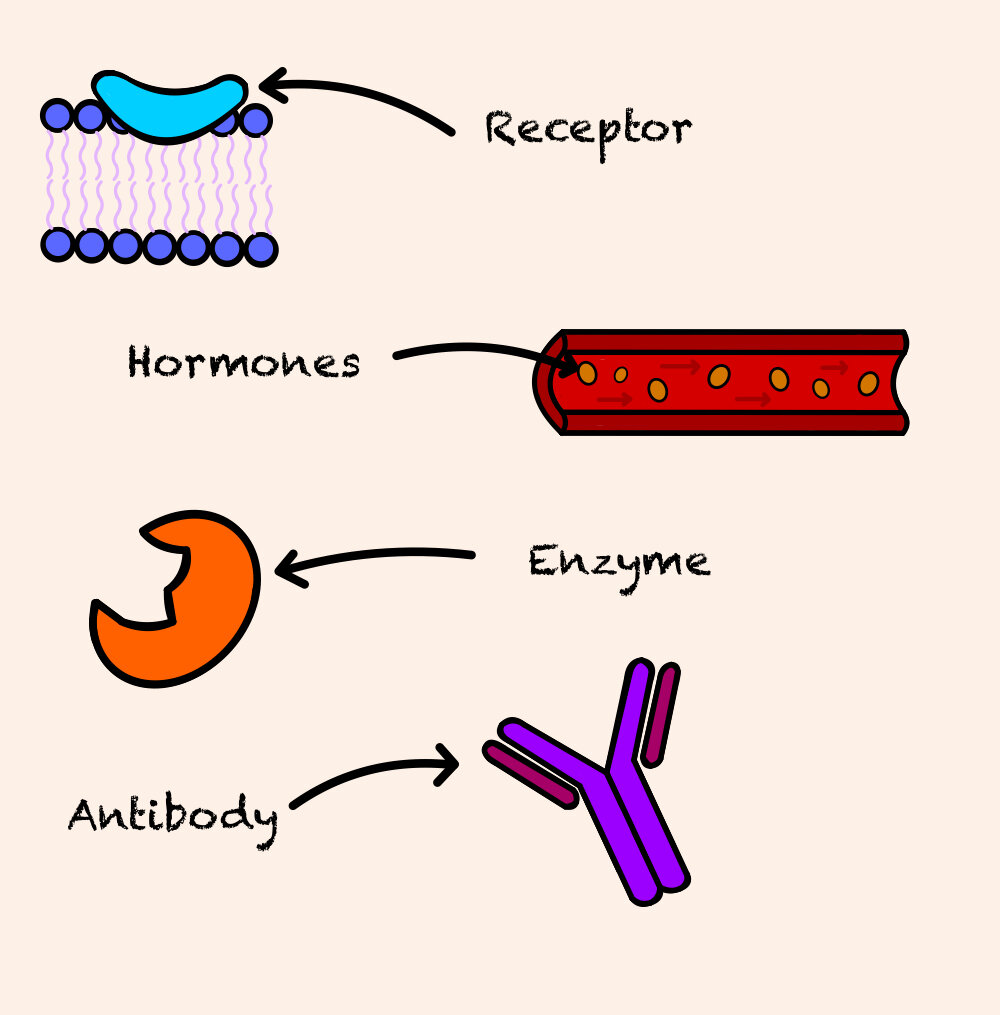Proteins
Proteins keep us ticking. They do all the little jobs that need done around our body, such as transporting messages, breaking down food, and being the components of a cool moustache.
Protein Structure
Proteins come in many, many shapes and sizes. These 3D shapes and sizes determine their function. The shape and function of different proteins is determined by the chain of amino-acids that makes up the protein.
Functions of proteins include receptors, enzymes, structural proteins, antibodies and hormones.
Receptors on cells allow chemical messengers to communicate between cells.
Enzymes are biological catalysts, that support chemical reactions.
Antibodies are small, Y-shaped proteins that work to fight off infection.
Hormones are chemical messengers in the body.
Enzymes
Catalysts are chemicals that speed up the rate of reactions without being used up in a reaction.
Enzymes are biological catalysts made by all living cells, so they speed up cellular reactions but aren’t used up by the reaction.
The shape of an enzyme is specific for a particular substrate(s). Enzymes have what is called an “active site,” which is essentially a space where the specific substrate(s) for the enzyme can slot into.
Enzymes convert substrates into products.
These biological catalysts can be used both in degradation reactions as well as synthesis reactions.
Enzymes Temperature and pH
Enzymes require the appropriate conditions to work properly.
The function of proteins and enzymes can be influenced by temperature and pH, therefore we need to keep them at their optimum pH and temperature to work effectively.
If the temperature is too low, chemical reactions will occur at a far slower rate as the molecules are not moving as quickly.
If the temperature is too high, the protein shape of the enzyme, and shape of the active site, can become denatured, causing the enzyme to not work effectively.
Likewise, enzymes have an optimum pH as well. If an enzyme is placed in a solution with a higher or lower pH than its optimum, the active site can denature and stop reactions occurring.
The optimum pH and temperature varies from enzyme to enzyme.
Key Points!
-
Protein Structure
Proteins are made up of amino acids.
Types of proteins include receptors, hormones, antibodies, enzymes and structural proteins
-
Enzymes
Enzymes are biological catalysts.
They speed up rate of reaction without being used up in the reaction.
They have a complementary substrate(s) to their active site.
They can break down and synthesise products.
-
Temperature and pH
Enzymes and other proteins have an optimum pH and temperature.
If temperature is too low, reaction rate is slow because molecules are not moving fast enough.
If temperature is too high, proteins can denature.
If an enzyme is exposed to too high or too low a pH, then the enzyme could denature.



